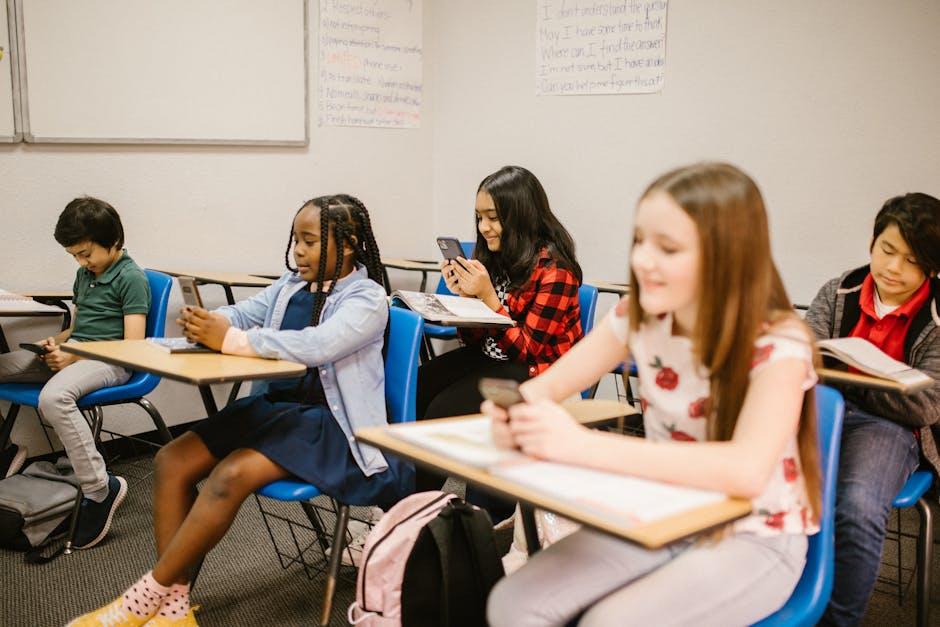In the vibrant, sun-kissed landscapes of Spain, a shadow looms across the schoolyards and digital playgrounds. It’s not the kind of shadow cast by the swaying branches of an olive tree or the silhouette of a bullfighter; rather, it’s a phenomenon that festers in the virtual corridors where today’s youth wander. Cyberbullying in Spanish schools has become an issue that demands a spotlight, not just for its immediate impact on victims but also for its broader implications on society and politics. At the same time, a term that sounds like it was conjured in the depths of a murky swamp has surfaced in the public dialogue: the “sludge machine.” A concept attributed to the far right, it’s become synonymous with the cyber manipulation and misinformation campaigns that muddy the waters of democratic discourse. As we delve into this complex landscape where technology intersects with human vulnerabilities and political ambitions, we uncover the facets of cyberbullying among Spanish youths and the insidious growth of the right’s “sludge machine.” This journey into the heart of Spain offers more than a glimpse into the challenges at the intersection of education, technology, and politics; it invites a dialogue on resilience, responsibility, and the road to recovery. Join us as we explore the intricate tapestry of issues that, while deeply rooted in Spanish society, echo the global struggle against cyberbullying and the fight for truth in the age of digital manipulation.
Navigating the Digital Playground: Understanding Cyberbullying in Spanish Schools
In the age of rapid digital expansion, the serene gardens and playgrounds once exclusive to physical spaces are now paralleled by their online counterparts. For the students in Spanish schools, these virtual arenas have become the forefront of interaction, learning, and unfortunately, the battleground for an insidious phenomenon: cyberbullying. This pernicious form of harassment leverages technology to spread hurtful and harmful content at a pace and breadth that is alarmingly unstoppable. As we unravel the complexities of cyberbullying, it becomes evident that its ramifications extend far beyond the digital echo chambers, gnawing at the emotional and psychological well-being of young individuals.
The ‘sludge machine’ is a term aptly coined to describe the methodical and relentless spread of cyberbullying through various digital platforms. In the context of Spanish educational institutions, this machine works overtime, consuming the joyous school life and leaving in its wake a trail of distressed and disheartened students. The computational prowess of social media algorithms combined with the anonymity afforded by digital personas have exacerbated the situation. The table below outlines the primary digital platforms where the sludge machine operates most effectively, highlighting the need for a robust counter-strategy that encompasses educational curriculum reformations, parental involvement, and stringent cyber laws to safeguard the innocence of the playground.
| Digital Platform | Percentage Affected* | Key Issues |
|---|---|---|
| 65% | Private message harassment, Group exclusion | |
| 52% | Comment abuse, Fake profiles | |
| 43% | Public shaming, Spreading rumors | |
| TikTok | 35% | Challenge abuse, Privacy violations |
| *Data represents the estimated percentage of students in Spanish schools who have encountered cyberbullying on the respective platforms. | ||
The Sludge Machine: Unpacking the Role of Right-Wing Extremism in Online Bullying
Amid the vibrant landscapes and rich cultural tapestry of Spain, the shadow of cyberbullying looms large, casting a pall over the digital playgrounds where the nation’s youth seeks camaraderie and knowledge. Within this specter, a particularly virulent strain has been identified, originating from the tendrils of right-wing extremism that weave through online forums and social media platforms. This nefarious influence, often dubbed the “sludge machine,” thrives on propaganda and misinformation, propelling its agenda forward by sowing division and animosity. Such tactics are not wielded haphazardly; they are calculated, designed to target vulnerabilities, exacerbating existing social and political fissures.
In dissecting the mechanics of this “sludge machine,” several strategies become apparent:
- Dissemination of fake news: Fabricated stories with sensational headlines are utilized to provoke outrage or fear, manipulating public perception.
- Trolling and harassment: Individuals, particularly those from marginalized communities or holding opposing viewpoints, are subjected to coordinated attacks aimed at silencing or discrediting them.
- Echo chambers: Enclosed online spaces are created, amplifying biased perspectives and insulating users from counterarguments or factual corrections.
Below is a table showcasing the reported impacts of these strategies on school environments, highlighting the urgent need for comprehensive cyberbulitics guidelines and digital literacy programs.
| Impact | Percentage of Schools Affected |
|---|---|
| Spread of Hate Speech | 65% |
| Increased Student Anxiety | 75% |
| Disruption of Teaching Environment | 80% |
This tableau paints a concerning picture of the current cyber landscape in Spanish schools, one exacerbated by the insidious influence of right-wing extremism. By understanding the modus operandi of the “sludge machine,” parents, educators, and policymakers can forge more effective strategies to counteract its impact, fostering a safer and more inclusive digital environment for the youth of Spain.
Creating Safe Spaces: Effective Strategies for Combatting Cyberbullying in Educational Settings
In the digital age, educational institutions are navigating the treacherous waters of cyberbullying, a pervasive issue that transcends the physical schoolyard boundaries, infiltrating the virtual spaces where students interact. To address this, creating safe spaces online is paramount, and it involves a multipronged approach that emphasizes both prevention and response. Preventative measures include the implementation of comprehensive digital citizenship programs that educate students about the responsible use of technology and the internet. Such programs should cover the repercussions of online harassment, emphasizing empathy and the importance of respecting others online. Furthermore, schools can deploy monitoring tools that track the digital pulse of student interactions, flagging potential issues of concern and thereby enabling timely intervention.
On the response side, immediate and appropriate actions are vital once an incident of cyberbullying comes to light. This includes establishing clear reporting mechanisms that students feel comfortable using, ensuring anonymity and support for those who come forward. Schools should foster a culture of openness, where students are encouraged to talk about their online experiences and report any instances of bullying. To effectively manage these cases, schools need to have a dedicated response team that includes not just educators but also psychologists and legal advisors, ensuring a holistic approach to solving the problem. Moreover, collaborations with tech companies may provide additional tools and resources for combating cyberbullying, showcasing the importance of partnerships between educational and technology sectors.
| Strategy | Description | Key Resources |
|---|---|---|
| Digital Citizenship Programs | Educating students on responsible online behavior. | Educational materials, seminars, online courses |
| Monitoring Tools | Tools to detect signs of cyberbullying in school’s digital environment. | Software, cybersecurity teams |
| Reporting Mechanisms | Systems allowing students to report bullying anonymously. | Online forms, hotlines, trusted adults |
| Response Team | Dedicated group handling cyberbullying incidents. | Educators, psychologists, legal advisors |
| Tech Partnerships | Collaborating with tech firms for solutions and resources. | Agreements, joint projects, educational tools |
Embedding these strategies into the fabric of educational settings fosters an environment where students feel secure and emboldened to navigate the digital realm. The road to eradicating cyberbullying is complex and requires constant vigilance, adaptation, and collective effort, but with the right frameworks in place, schools can provide sanctuaries that not only educate but also protect their students in the digital age.
Recommendations for Change: Building a More Inclusive and Respectful Online Community
As we delve into the complexities of mitigating cyberbullying in Spain and combating the negative influence of the right’s ‘sludge machine,’ it becomes evident that comprehensive strategies are essential. To foster an inclusive and respectful online community, especially within educational settings, several proactive measures can be implemented. Firstly, education and awareness are paramount. Schools should incorporate digital literacy programs that encompass not only the technological aspects but also the social and ethical implications of online behavior. These programs should aim to cultivate empathy and respect among students, highlighting the consequences of cyberbullying on a peer’s mental and emotional well-being.
Moreover, the creation of a reporting and support system within educational institutions is crucial. This system should offer a straightforward and anonymous way for students to report instances of cyberbullying, ensuring they feel safe and supported. Coupled with this, schools need to establish a clear anti-bullying policy that delineates consequences for cyberbullying behaviors, making them known to all students, teachers, and parents.
| Action Item | Details |
|---|---|
| Enhanced Digital Literacy Curriculum | Integrate comprehensive lessons on empathy, ethics, and responsibility in the digital realm. |
| Anonymous Reporting Mechanisms | Implement user-friendly platforms for students to report cyberbullying anonymously. |
| Clear Anti-Bullying Policy | Develop and communicate a transparent policy with defined repercussions for bullying. |
In addition to these strategies, fostering community engagement is equally important. Encouraging collaboration between students, parents, educators, and broader community members in creating a safe online environment can enhance the effectiveness of anti-cyberbullying initiatives. Participatory workshops, seminars, and discussions can serve as platforms for sharing experiences, strategies, and support, reinforcing the collective responsibility to ensure a respectful and inclusive online space.
Ultimately, the path to a more inclusive and respectful online community lies in the synergy between robust educational programs, effective reporting systems, clear anti-bullying policies, and active community involvement. By embracing these recommendations, schools in Spain can take significant strides towards mitigating the adverse effects of cyberbullying and creating a safer online environment for all students.
The Way Forward
In the labyrinth of the digital age, where the boundaries between the real and virtual blur, Spain stands at a precipice, witnessing the twofold challenge of cyberbullying within its educational arenas and the complex web of political sludge machines. Navigating through this expanse requires more than just legislative vigilance; it calls for a collective awakening. As we have endeavored to explore the depths of cyberbullying in schools and dissect the fabric of political disinformation, we are reminded that the solutions lie not only within the hands of policymakers but in the keystrokes of every citizen. It is in our shared narratives and interactions that the bulwark against these digital dilemmas will be fortified. So, as we close this chapter, let us not forget that the journey towards a harmonious digital coexistence is perpetual, demanding constant vigilance, empathy, and proactive engagement from all corners of society. The dialogue continues, and it is within this ongoing conversation that hope and resolution lie. Spain, with its rich tapestry of culture and history, is poised to turn the tide against these twin digital scourges, setting a beacon of hope for others to follow. In this digital age, may we all find the courage to steer the ship towards safer shores, where respect and understanding reign supreme in both our real and virtual worlds.




